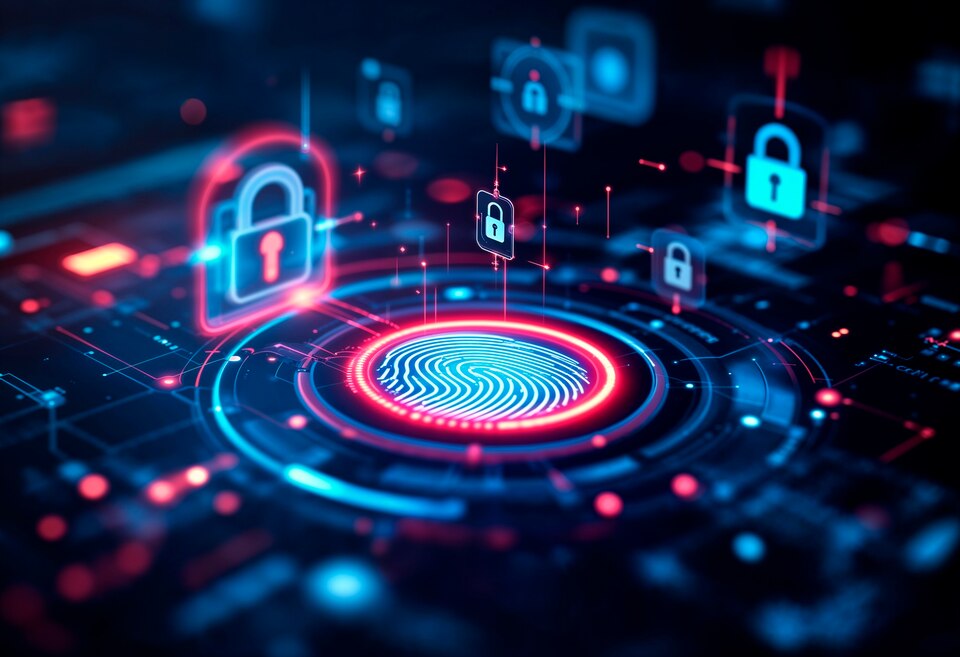With rising cyber threats, learn practical tips to protect your personal data and maintain online privacy in 2025.
In a digital world where everything from banking to healthcare is online, cybersecurity is no longer optional—it’s essential. The year 2025 has seen a dramatic increase in cyberattacks, including phishing, ransomware, identity theft, and data breaches. This blog offers practical, updated advice on how individuals and businesses can protect themselves in an evolving digital landscape.

Why Cybersecurity Matters in 2025
As our reliance on digital tools and the Internet of Things (IoT) grows, so do the opportunities for cybercriminals. With AI-driven attacks and increasingly sophisticated malware, the risks are greater than ever before.
Key Cyber Threats in 2025:
-
AI-Driven Phishing: Hackers use machine learning to generate highly convincing fake emails and messages.
-
Ransomware-as-a-Service: Available on the dark web, making attacks more accessible.
-
IoT Exploits: Vulnerabilities in smart home devices and wearables are common entry points.
-
Deepfake Attacks: Used to impersonate executives or manipulate content.
Cybersecurity Tips for Individuals
1. Use Strong, Unique Passwords
-
Use a password manager.
-
Avoid reusing passwords across sites.
-
Use long, complex combinations of letters, numbers, and symbols.
2. Enable Multi-Factor Authentication (MFA)
-
Adds an extra layer of protection beyond passwords.
-
Prefer apps like Google Authenticator or hardware keys like YubiKey.
3. Keep Software Updated
-
Regular updates patch vulnerabilities.
-
Turn on auto-updates for your OS, browser, and security tools.
4. Avoid Public Wi-Fi for Sensitive Tasks
-
Use a VPN to encrypt your data.
-
Avoid banking, shopping, or logging into accounts on public networks.
5. Recognize Phishing Attempts
-
Don’t click unknown links or download unverified attachments.
-
Verify email addresses and URLs carefully.
-
Be skeptical of urgent or emotional messaging.

Cybersecurity Tips for Businesses
1. Conduct Regular Security Audits
-
Evaluate vulnerabilities and fix gaps.
-
Simulate attacks (penetration testing).
2. Train Employees
-
Cybersecurity awareness training helps prevent human error.
-
Teach staff how to detect phishing and social engineering.
3. Back Up Data Frequently
-
Store backups off-site or on cloud platforms with encryption.
-
Automate backups and test restoration regularly.
4. Implement Zero Trust Architecture
-
Trust no device or user by default.
-
Validate all users before granting access to data or systems.
5. Use Endpoint Detection and Response (EDR)
-
Advanced EDR tools detect and isolate threats quickly.
-
Useful for remote workforce security.
Emerging Cybersecurity Technologies
-
AI-Powered Threat Detection: Identifies patterns and anomalies in real time.
-
Behavioral Biometrics: Monitors user behavior rather than static credentials.
-
Homomorphic Encryption: Allows data to be analyzed while encrypted.
-
Quantum-Resistant Encryption: Prepares systems for future threats.
Protecting Personal Data in 2025
-
Limit data sharing on social platforms and apps.
-
Review app permissions and only allow necessary access.
-
Opt out of unnecessary data collection and marketing.
-
Use encrypted messaging apps like Signal or Telegram.
Government & Industry Response
-
New regulations like Global Digital Privacy Act (GDPA) are being enforced.
-
Companies are mandated to report breaches within 72 hours.
-
Fines for non-compliance can reach millions.

Conclusion
Cybersecurity in 2025 is about being proactive, not reactive. Whether you’re a casual internet user, a freelancer, or running a business, implementing these best practices can greatly reduce your risk. With cyber threats evolving daily, your best defense is a strong offense—powered by awareness, tools, and vigilance.

